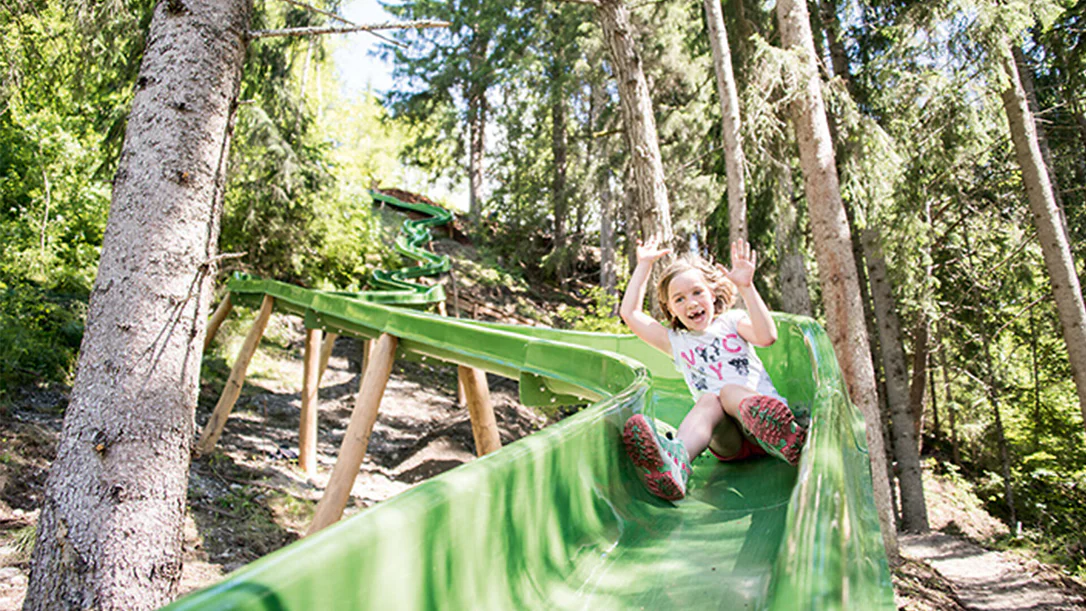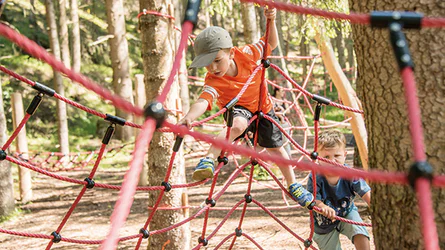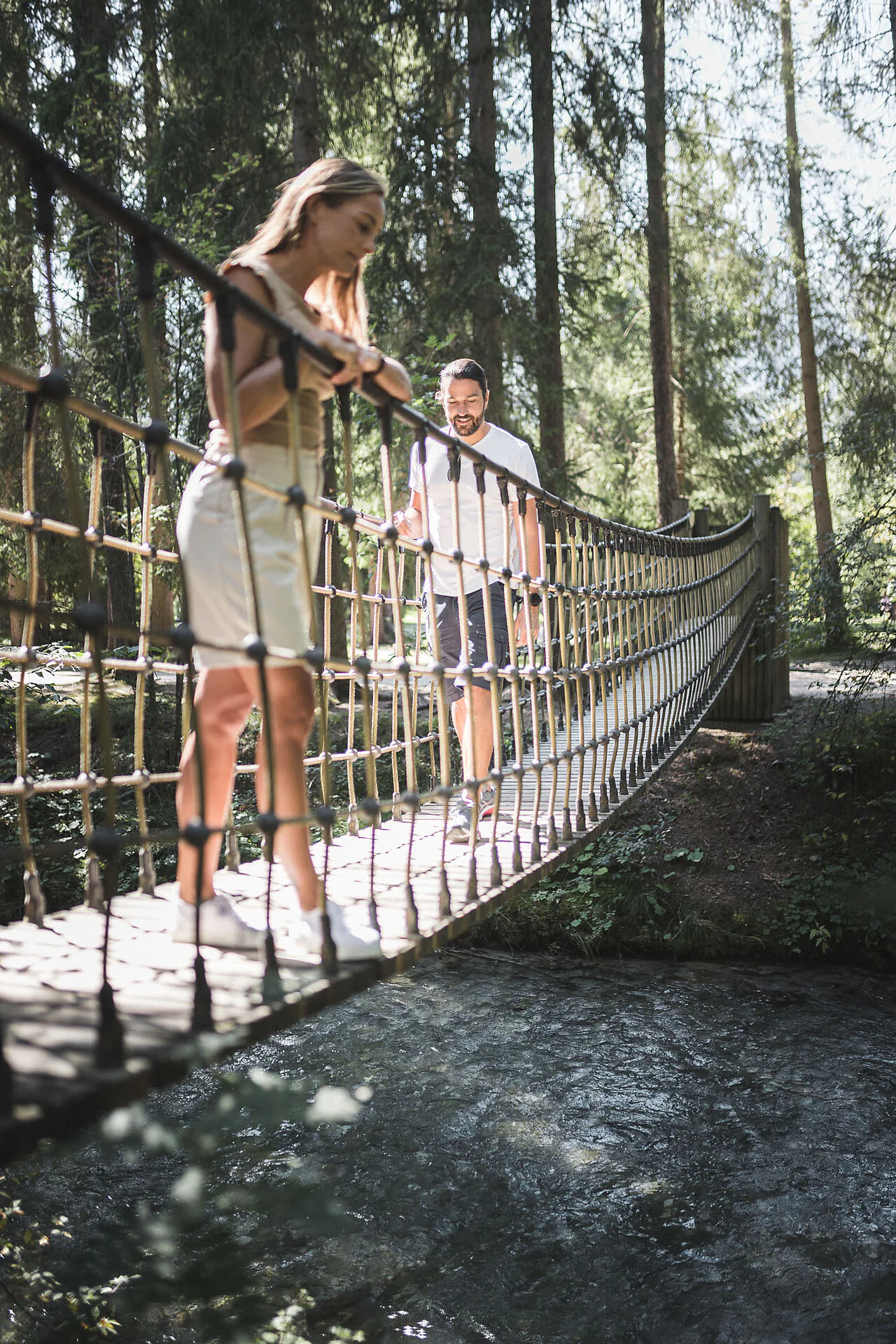On the path, which is suitable for strollers, you will first encounter the playground, which is especially suitable for children from 1 to 4 years. Continue to the forest playground with a tree house path and various climbing opportunities. After that, the water world awaits you with the undisputed highlight: the 56-meter long super slide - the longest in all of South Tyrol. Finally, the older kids between 8 and 14 can really let off steam on a balance course in the climbing world.
And the parents? They are happy about the unexpected time out, soak up the sun and enjoy the panorama. That's how relaxed a family vacation in Olang/Valdaora can be.
By the way: a visit to the Kids World can be optimally combined with a bike tour. It is located directly on the Pustertal Valley cycle path.





















































































































